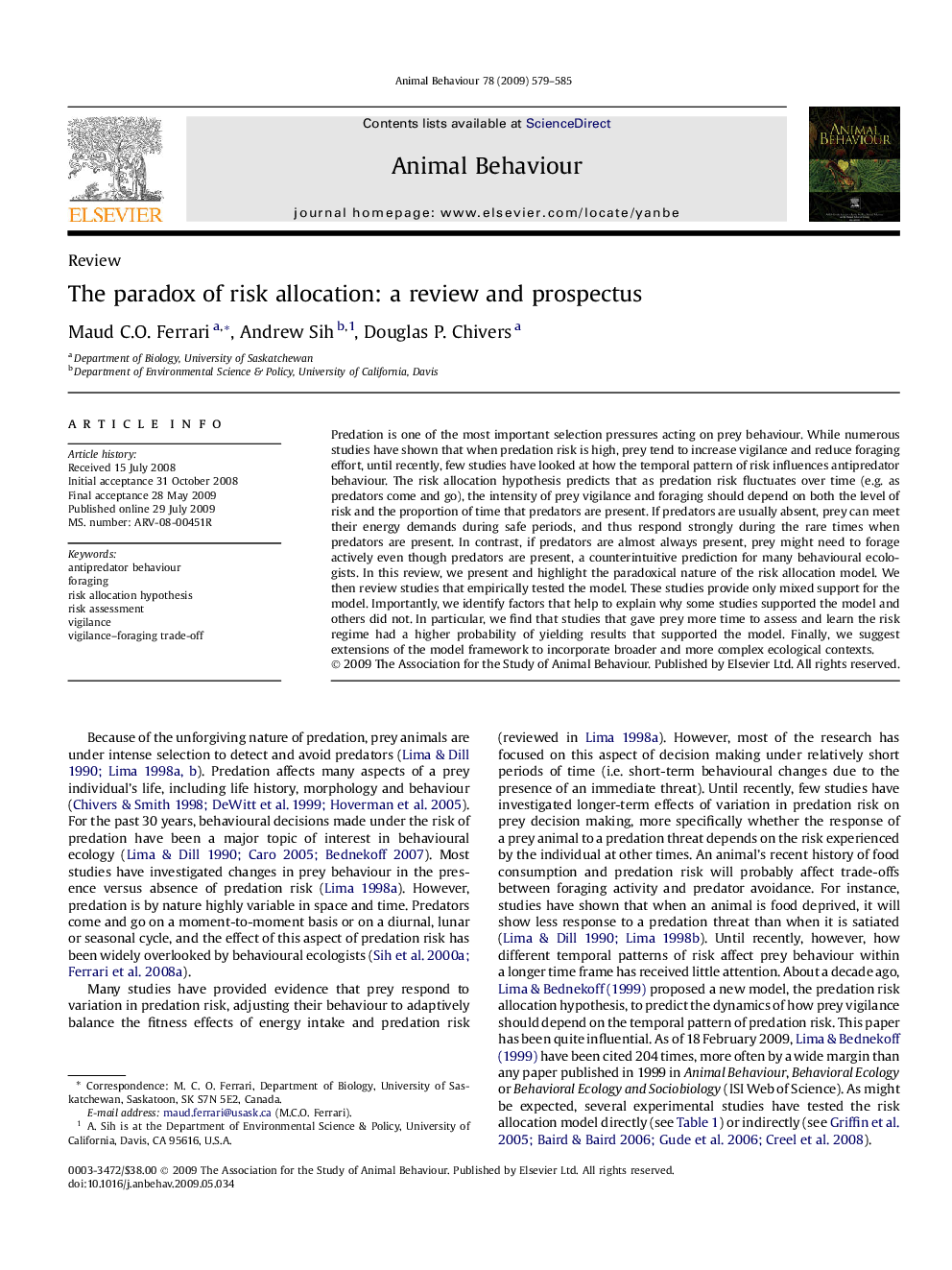| کد مقاله | کد نشریه | سال انتشار | مقاله انگلیسی | نسخه تمام متن |
|---|---|---|---|---|
| 2417319 | 1104316 | 2009 | 7 صفحه PDF | دانلود رایگان |

Predation is one of the most important selection pressures acting on prey behaviour. While numerous studies have shown that when predation risk is high, prey tend to increase vigilance and reduce foraging effort, until recently, few studies have looked at how the temporal pattern of risk influences antipredator behaviour. The risk allocation hypothesis predicts that as predation risk fluctuates over time (e.g. as predators come and go), the intensity of prey vigilance and foraging should depend on both the level of risk and the proportion of time that predators are present. If predators are usually absent, prey can meet their energy demands during safe periods, and thus respond strongly during the rare times when predators are present. In contrast, if predators are almost always present, prey might need to forage actively even though predators are present, a counterintuitive prediction for many behavioural ecologists. In this review, we present and highlight the paradoxical nature of the risk allocation model. We then review studies that empirically tested the model. These studies provide only mixed support for the model. Importantly, we identify factors that help to explain why some studies supported the model and others did not. In particular, we find that studies that gave prey more time to assess and learn the risk regime had a higher probability of yielding results that supported the model. Finally, we suggest extensions of the model framework to incorporate broader and more complex ecological contexts.
Journal: Animal Behaviour - Volume 78, Issue 3, September 2009, Pages 579–585